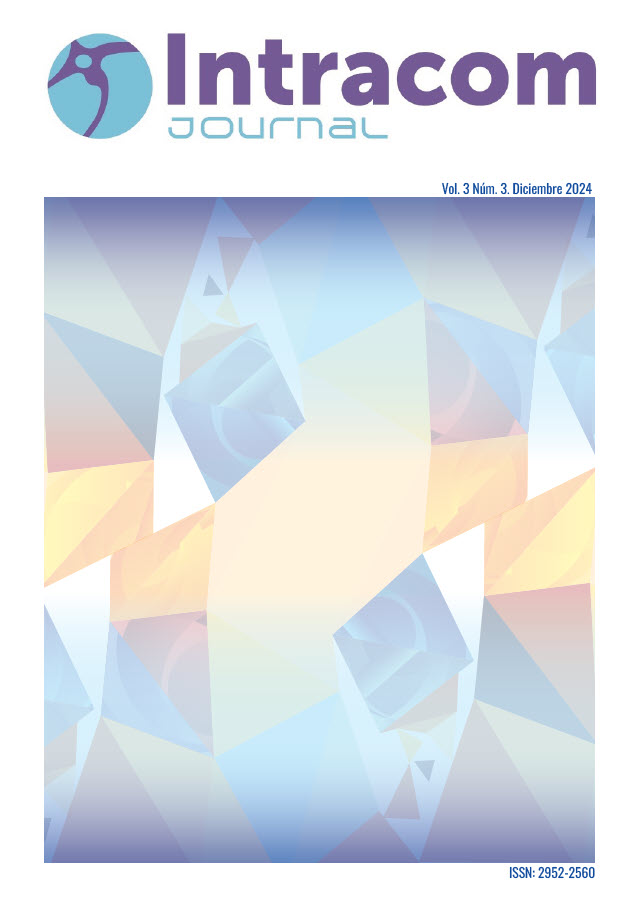Risks and consequences for adolescents in relation to the use of algorithms and the provision of data on the Internet and Artificial Intelligence
DOI:
https://doi.org/10.61283/03tg0214Abstract
This research focuses on exploring the vulnerability of adolescents in their data privacy and decision-making when using Artificial Intelligence. It is a qualitative study applied to young people between 16 and 17 years of age, through three focus group sessions. The results of the investigation indicate that the interviewees had free access to the Internet on a tablet, computer or phone during puberty, without parental supervision, which caused them to be exposed to dangers such as extortion, scams or sexual harassment. In addition, they reported problematic use of online games and social networks, as they are often hooked on their consumption. Media literacy is absent in the parents and young people who participated in the research, and there is a lack of knowledge of the risks that can exist both on the Internet and in Artificial Intelligence. This work will be delivered to the area of basic education pedagogy in the Ministry of Education of the State of Nuevo Leon, Mexico, which will allow for a second investigation to be carried out to develop workshops for parents and children on media literacy.
Downloads
References
Argemí, M. (2019) Los 7 hábitos de la gente desinformada. Cómo informarse y tomar decisiones en las redes sociales. Conecta.
Arroyo, D., Gayoso, V y Hernández, L. (2020) ¿Qué sabemos de ciberseguridad? CSIC
Arreola, G. (2019) Ciberseguridad ¿Por qué es importante para todos?. Siglo Veintiuno editores.
Capellán, M. Cardenal, L., Sánchez, M., Romero, V., López, M., Ramírez, L. (2022) Guía abuso de internet y ciberbullying. Información básica e indicaciones para familias. Desde un enfoque de género. Editorial Ceapa
De la Cruz, J. (2023). Ciberseguridad para todos. Como protegerse, incluso si no eres un experto en tecnología. Independently published
Han, B.CH. (2021). No-cosas. Quiebras del mundo de hoy. Taurus.
Malhotra, N.K.(2020) Investigación de mercados. Pearson
Morduchowicz, R. (2012) Los adolescentes y las redes sociales. La construcción de la identidad juvenil en internet. Fondo de Cultura económica.
Oliver, N. (2020). Inteligencia Artificial, naturalmente. Secretaría General Técnica. Centro de Publicaciones
Ryan, D. (2019) Guía para entender las redes sociales. Trillas.
Sidorov, G. (2011) Métodos modernos de Inteligencia Artificial (Ed.) CSIC
Unicef (2021) La IA y tú: Guía sobre IA para adolescentes. Oficina de Política y Perspectiva Mundial de UNICEF.
Valverde, N (2021). Presentación. Inteligencia artificial y nuevas éticas de la convivencia. Arbor, 197(800): a599. 1-10
Downloads
Published
Issue
Section
License
Copyright (c) 2024 Dra Marlen Yadari Pérez Viveros, Dra Moncerrat Arango Morales (Autor/a)

This work is licensed under a Creative Commons Attribution-NonCommercial-ShareAlike 4.0 International License.
Política de acceso abierto
Se permite el acceso libre y abierto de cualquier interesado a todos los contenidos de los números de la revista, sin costo alguno, pudiendo imprimir y trasladar todos los artículos, con la única condición de precisar la fuente y la autoría.
La revista: a) no cobra a las autorías costes por el procesamiento de los artículos ni por el envío de los mismos, b) mantiene el copyright para los autores sin restricciones, c) facilita a los autores conservar sus derechos de publicación sin limitaciones.
La Revista Internacional de Investigación y Transferencia en Comunicación y Ciencias Sociales (INTRACOM) es una obra original gestionada por Activa 19 Comunicaciones. Todos los artículos incluidos en la Revista son obra original de sus respectivas autorías. Esta Revista se ofrece libremente a la comunidad científica y académica sin coste alguno y libera los contenidos de acuerdo a la licencia "Reconocimiento-NoComercial-CompartirIgual 4.0 CC BY-NC-SA" del proyecto Creative Commons dispuesta en la siguiente url: https://creativecommons.org/licenses/by-nc-sa/4.0/legalcode







